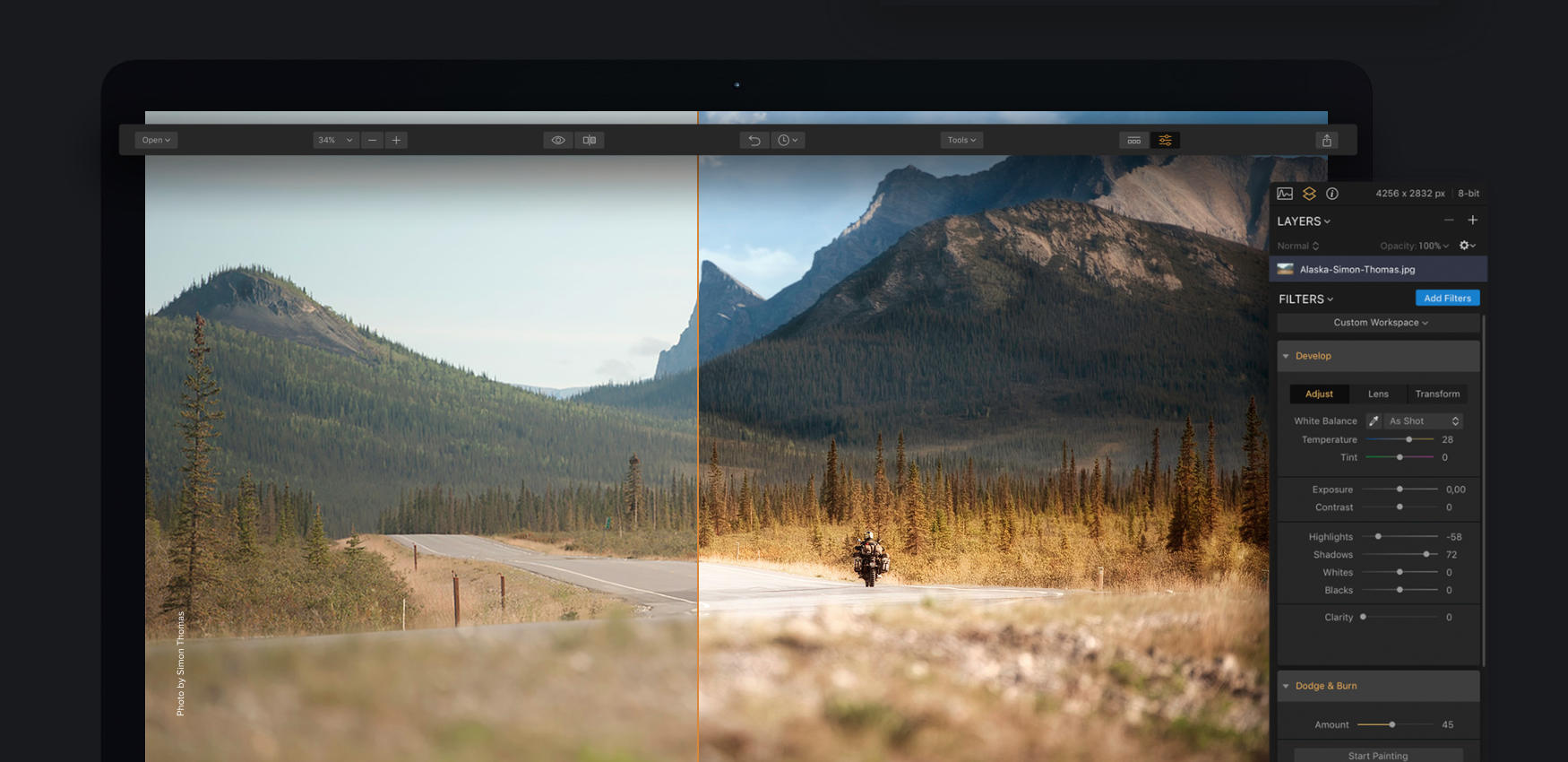

In Luminar 4, you can copy settings from one image to another. You can adjust the intensity and add a mask to the layer as with all the other tools. You can easily toggle the layer off or delete it.
#Luminar editing plus
Save the Clone tool for dust spots and easy removals.īoth the Clone and Erase tools automatically create new adjustment layers on the plus side. The Erase tool works fine for simple removals. They get the job done, but they are a little clunky. The Clone and Erase tools are in the Canvas module. But you cannot search with keywords or EXIF data like focal length. You can now search images by name, date, or extension. You can create albums, and there are some intuitive smart folders like “Favorites.”īut if you have a lot of images, you may struggle to find the one you want. But it does not include other metadata like tags, titles, or descriptions. The Info panel includes basic EXIF data from your camera.

All these options are hidden in keyboard shortcuts and right-click menus. You can pick, star, and color-code images. But the features are limited compared to other programs. But there are a few issues that limit usability. You can add when and where you need them. The tools work smoothly, and you can see your adjustments immediately in the preview. It may seem repetitive to have a Mask Edit button in nearly every panel. Hold the Alt or Option key to subtract the edit from your photo. Click this to apply changes to select parts of your image using a brush, radial filter, or graduated filter. In most editing panels, including tools that use AI, there is an Edit Mask button. If you like the AI adjustments but only want to apply them to certain parts of your image, no problem! The Edit Mask tools are right there in the panel. The ease of adding light goes beyond what you can do in either Photoshop or Lightroom. Then use the sliders to blend the sun and create a natural look. Luminar 4 also lets you add sun rays to your image. They all include some level of AI and basic photo editing tools.Īlso, you can choose to add textures, glow, fog, or a whole host of Color Styles (LUT)-”Look Up Tables.” Hover over the title to see a preview of your image. The programs overlap but are independent to a certain extent. As mentioned, it also released Luminar Neo early in 2022. It’s easy to send images back and forth between the programs if you have Adobe workflow and like some of Luminar 4’s features.Īlongside Luminar 4, Skylum produces Luminar AI.
#Luminar editing software
This software is a stand-alone photo editor and works as a plug-in with Lightroom and Photoshop. The interface is different, more streamlined, and easier to use. The program has gone through a few updates since, with some new features added in version 4.3.
#Luminar editing upgrade
It is a significant upgrade from the previous program. Skylum released this software in 2019 to replace Luminar 3. As we increase the matte look, you'll see that it really helps bring out the shadows and definition in some of the darker areas.Luminar 4 Photo Editing Software Review But I'm going to drag that up a little bit so it happens earlier. I'll click to add, and it puts it at the bottom of the stack. In this case, it's going to take this classic image, with very traditional dress and make it feel a little bit aged. Let's add the matte look filter here, and this is really going to help age the photo. Another one called high-key will create a slightly overexposed image with a lot of contrast, and it's often used for fashion shoots.

The matte filter is great at producing images that have higher contrast and lower saturation values. While Luminar offers several filters that you can use on your images, there are a couple that are well designed for portraits.


 0 kommentar(er)
0 kommentar(er)
